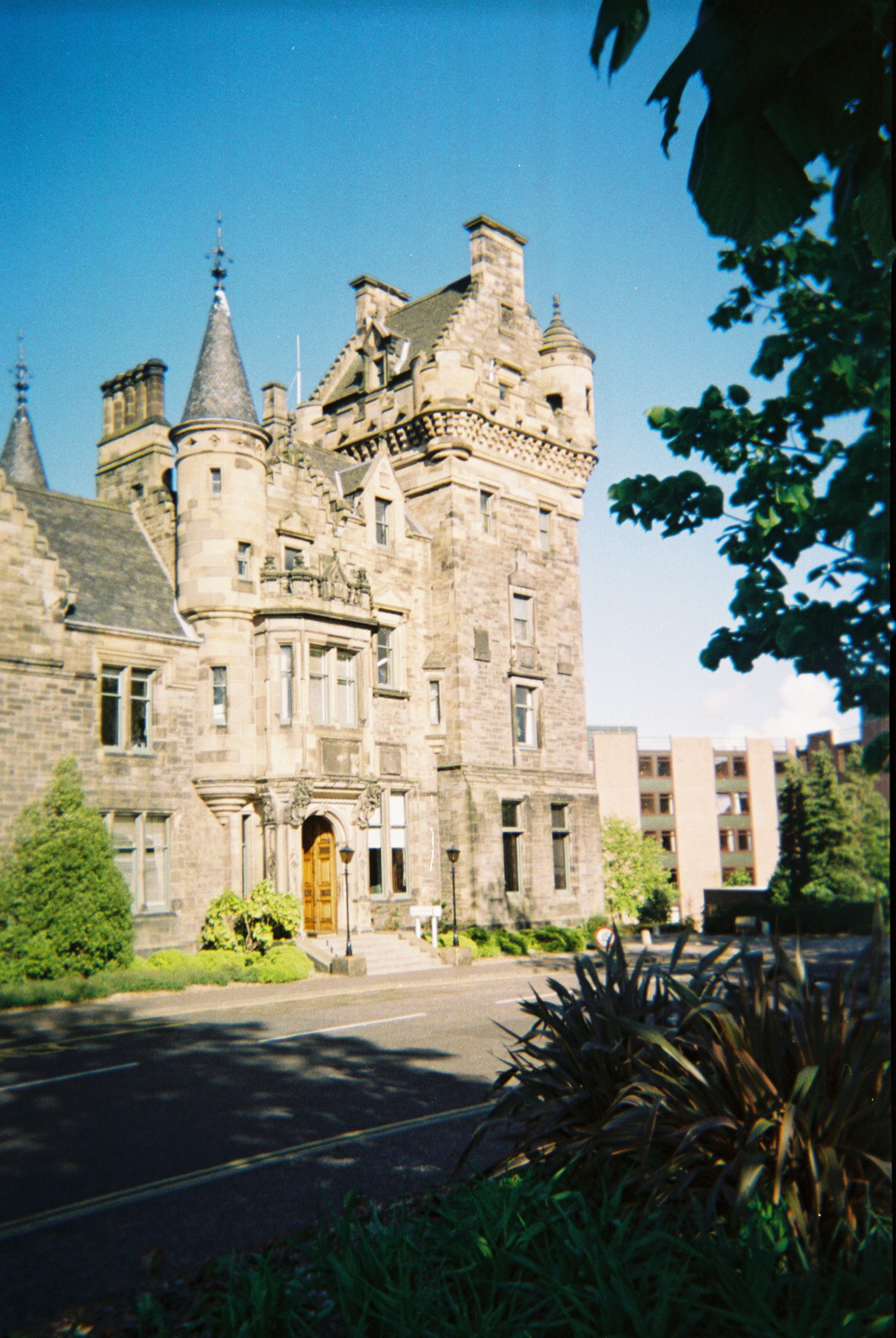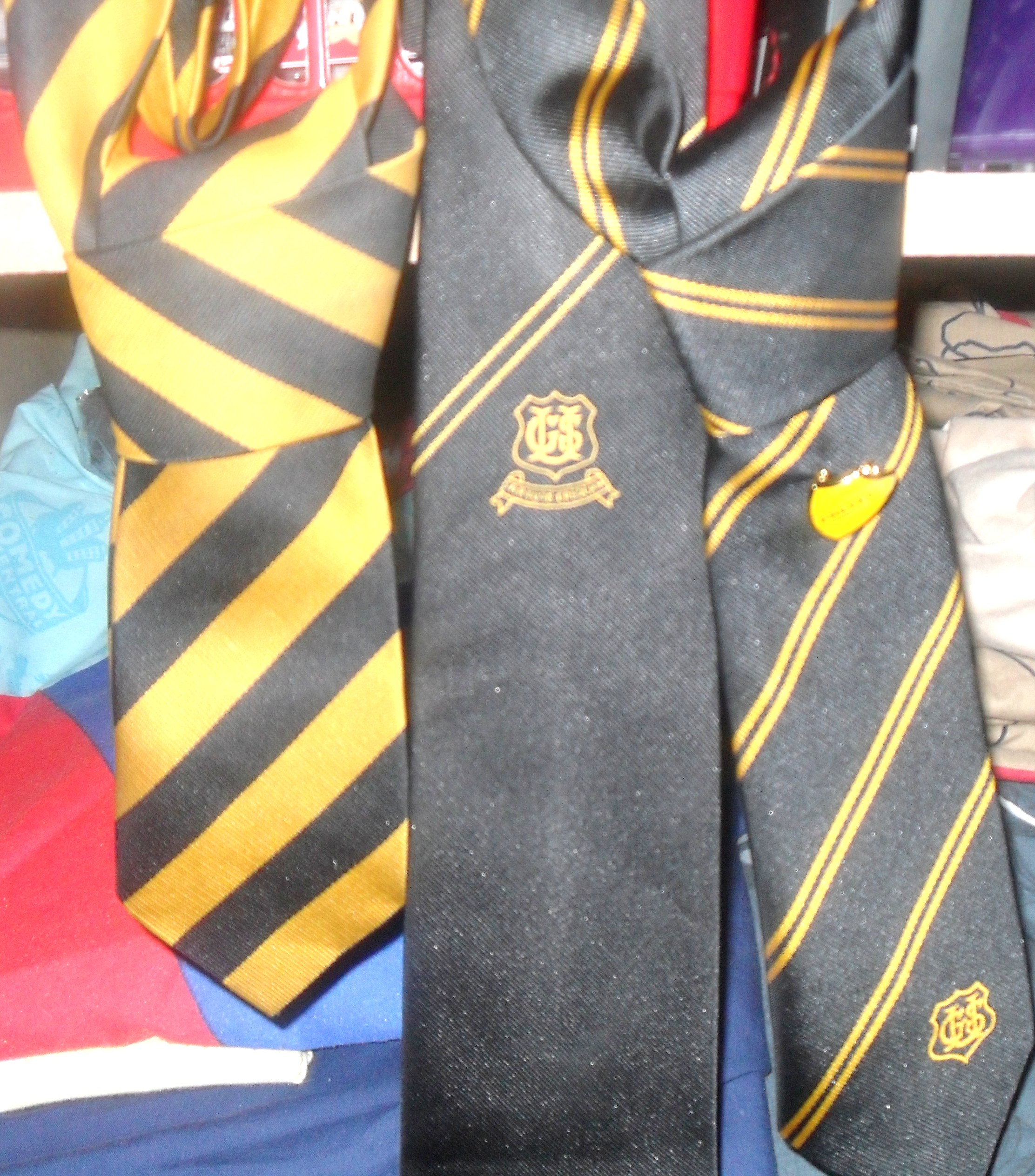|
St Trinnean's
St Trinnean's was a progressive girls' school in Edinburgh. It was founded in 1922 by its headmistress, Catherine Fraser Lee, who followed the Dalton Plan so that pupils could study what they wished and there was no homework. It was located at 10, Palmerston Road ŌĆō the former home of Horatius Bonar ŌĆō a minister and prodigious hymn writer. In 1925, it relocated to the grand mansion of St Leonard's Hall which had been built for the wealthy publisher, Thomas Nelson. In 1929, it had 122 day children and 38 boarders ŌĆō pupils who lived at the school. When the Second World War broke out in 1939, the school evacuated to New Gala House ŌĆō a mansion in Galashiels. Its pupils at that time included Jewish refugees of the ''Kindertransport''. After the war, the school closed when Miss Fraser Lee retired in 1946. The school uniform was a pale blue tunic with fawn-coloured stockings and coat of Harris Tweed. The school was named after Saint Ninian, who was also known as ... [...More Info...] [...Related Items...] OR: [Wikipedia] [Google] [Baidu] |
Harris Tweed
Harris Tweed, (''Cl├▓ M├│r'' or ''Cl├▓ Hearach'' in Gaelic) is a tweed (cloth), tweed cloth that is Weaving, handwoven by islanders at their homes in the Outer Hebrides of Scotland, finished in the Outer Hebrides, and made from pure virgin wool dyed and Spinning (textiles), spun in the Outer Hebrides. This definition, quality standards and protection of the Harris Tweed name are enshrined in the Harris Tweed Act 1993. Etymology The original name of tweed fabric was ''"tweel"'', the Scots language, Scots word for twill, as the fabric was woven in a twill weave rather than a plain (or tabby) weave. A number of theories exist as to how and why ''"tweel"'' became corrupted into "tweed"; in one, a London merchant in the 1830s, upon receiving a letter from a Hawick firm inquiring after ''"tweels"'', misinterpreted the spelling as a trade name taken from the River Tweed, which flows through the Scottish Borders. Subsequently, the goods were advertised as "tweed", the name used ever sinc ... [...More Info...] [...Related Items...] OR: [Wikipedia] [Google] [Baidu] |
Pauline Harrison
Pauline May Harrison (n├®e Cowan) (born 24 August 1926) is a British protein crystallographer and professor emeritus at the University of Sheffield. She gained her chemistry degree from Somerville College, Oxford in 1948, followed by a DPhil in X-ray crystallography in 1952 supervised by Dorothy Hodgkin. After 3 years at King's College London (contemporary with Rosalind Franklin) she moved to the University of Sheffield in 1955 as a demonstrator in the Biochemistry department (now Molecular Biology and Biotechnology), obtaining an MRC grant to study the iron storage protein Ferritin, publishing preliminary X-ray diffraction data in the 1st volume of the Journal of Molecular Biology in 1959. The molecule which became her life's work. In 1978, she was awarded a personal chair and retired in 1991. In 2001 she was appointed a CBE for services to higher education. Personal life Harrison is the daughter of botanists Adeline May Organe and John Macqueen Cowan, Assistant Keeper o ... [...More Info...] [...Related Items...] OR: [Wikipedia] [Google] [Baidu] |
Head Girl
Head boy and head girl are student leadership roles in schools, representing the school's entire student body. They are normally the most senior prefects in the school. The terms are commonly used in the British education system as well as in Australia and private schools throughout the Commonwealth. Some schools use alternative titles such as school captain. Head boys and head girls are usually responsible for representing the school at events, and will make public speeches. They also serve as a role model for students, and may share pupils' ideas with the school's leadership. They may also be expected to lead fellow prefects in their duties. Deputy head boys and girls may also be appointed. Some schools in the UK no longer use the titles of head boy and head girl, and now have a role of "head pupil". See also *Senior Prefect Prefect (from the Latin ''praefectus'', substantive adjectival form of ''praeficere'': "put in front", meaning in charge) is a magisterial title of ... [...More Info...] [...Related Items...] OR: [Wikipedia] [Google] [Baidu] |
St Trinians
''St Trinian's'' is a British gag cartoon comic strip series, created and drawn by Ronald Searle from 1946 until 1952. The cartoons all centre on a boarding school for girls, where the teachers are sadists and the girls are juvenile delinquents. The series was Searle's most famous work and inspired a popular series of comedy films. Concept Searle published his first St Trinian's School cartoon in 1941 in the magazine '' Lilliput''. Shortly afterward he entered the military during World War II. He was captured at Singapore and spent the rest of the war as a prisoner of the Japanese. After the war, in 1946 Searle started making new cartoons about the girls, but the content was much darker compared to the earlier years. The school is the antithesis of the type of posh girls' boarding school depicted by Enid Blyton or Angela Brazil; its female pupils are bad and often well armed, and mayhem is rife. The schoolmistresses are also disreputable. Cartoons often showed dead bodies of gi ... [...More Info...] [...Related Items...] OR: [Wikipedia] [Google] [Baidu] |
Ronald Searle
Ronald William Fordham Searle, CBE, RDI (3 March 1920 ŌĆō 30 December 2011) was an English artist and satirical cartoonist, comics artist, sculptor, medal designer and illustrator. He is perhaps best remembered as the creator of St Trinian's School and for his collaboration with Geoffrey Willans on the Molesworth series. Biography Searle was born in Cambridge, England, where his father was a Post Office worker who repaired telephone lines. He started drawing at the age of five and left school (Central School ŌĆō now Parkside School) at the age of 15. He trained at Cambridge College of Arts and Technology (now Anglia Ruskin University) for two years. In April 1939, realizing that war was inevitable, he abandoned his art studies to enlist in the Royal Engineers. In January 1942, he was in the 287th Field Company, RE in Singapore. After a month of fighting in Malaya, he was taken prisoner along with his cousin Tom Fordham Searle, when Singapore fell to the Japanese. He sp ... [...More Info...] [...Related Items...] OR: [Wikipedia] [Google] [Baidu] |
The Belles Of St
''The'' () is a grammatical article in English, denoting persons or things already mentioned, under discussion, implied or otherwise presumed familiar to listeners, readers, or speakers. It is the definite article in English. ''The'' is the most frequently used word in the English language; studies and analyses of texts have found it to account for seven percent of all printed English-language words. It is derived from gendered articles in Old English which combined in Middle English and now has a single form used with pronouns of any gender. The word can be used with both singular and plural nouns, and with a noun that starts with any letter. This is different from many other languages, which have different forms of the definite article for different genders or numbers. Pronunciation In most dialects, "the" is pronounced as (with the voiced dental fricative followed by a schwa) when followed by a consonant sound, and as (homophone of pronoun ''thee'') when followed by a v ... [...More Info...] [...Related Items...] OR: [Wikipedia] [Google] [Baidu] |
St Trinian's School
''St Trinian's'' is a British gag cartoon comic strip series, created and drawn by Ronald Searle from 1946 until 1952. The cartoons all centre on a boarding school for girls, where the teachers are sadists and the girls are juvenile delinquents. The series was Searle's most famous work and inspired a popular series of comedy films. Concept Searle published his first St Trinian's School cartoon in 1941 in the magazine '' Lilliput''. Shortly afterward he entered the military during World War II. He was captured at Singapore and spent the rest of the war as a prisoner of the Japanese. After the war, in 1946 Searle started making new cartoons about the girls, but the content was much darker compared to the earlier years. The school is the antithesis of the type of posh girls' boarding school depicted by Enid Blyton or Angela Brazil; its female pupils are bad and often well armed, and mayhem is rife. The schoolmistresses are also disreputable. Cartoons often showed dead bodies of gi ... [...More Info...] [...Related Items...] OR: [Wikipedia] [Google] [Baidu] |
School Tie
The school tie is part of the school uniform required by a large number of English schools. The old school tie refers to a tie voluntarily worn by alumni of long established British schools. Figuratively, it is used to refer to the connection between members of the elite who attended the institutions: this is particularly associated with public schools. School tie A school tie indicates pupils of a particular school, or year group, or of a particular house in that school. In addition, for some schools, the school tie is not merely an indication that the student belongs to a group or community but the tie is a part of the concept called "smart": which associates tidy school uniforms with high standards. There are scholars who view the school tie as a way for people to distinguish between groups and social classes in the way students are labelled according to the colour of their ties and their uniforms. Old school tie An old school tie or old boys tie is a tie that, on ... [...More Info...] [...Related Items...] OR: [Wikipedia] [Google] [Baidu] |
Whithorn
Whithorn ( ł╩Ź╔¬thorn 'HWIT-horn'; ''Taigh Mh├Ārtainn'' in Gaelic), is a royal burgh in the historic county of Wigtownshire in Dumfries and Galloway, Scotland, about south of Wigtown. The town was the location of the first recorded Christian church in Scotland, ''Candida Casa'' : the 'White r 'Shining'House', built by Saint Ninian about 397. Toponymy There is a tradition that St Ninian built a church of stone and lime nearby in the late 4th century; it was called , the White House. "Whithorn" is a modern form of the Anglo-Saxon version of this name, ''Hwit ├årn'', "white house". In Gallovidian Gaelic, it was called ''Rosnat'', or ''Futarna'', the latter a version of the Anglo-Saxon name (Gaelic has no sound corresponding to English ''wh''). Ninian dedicated the church to his master Martin of Tours, and when he died (probably in 432) Ninian was buried in the church. Early history A monastery and diocese of the Anglo-Saxon kingdom of Northumbria was founded on the site in th ... [...More Info...] [...Related Items...] OR: [Wikipedia] [Google] [Baidu] |




.png)

